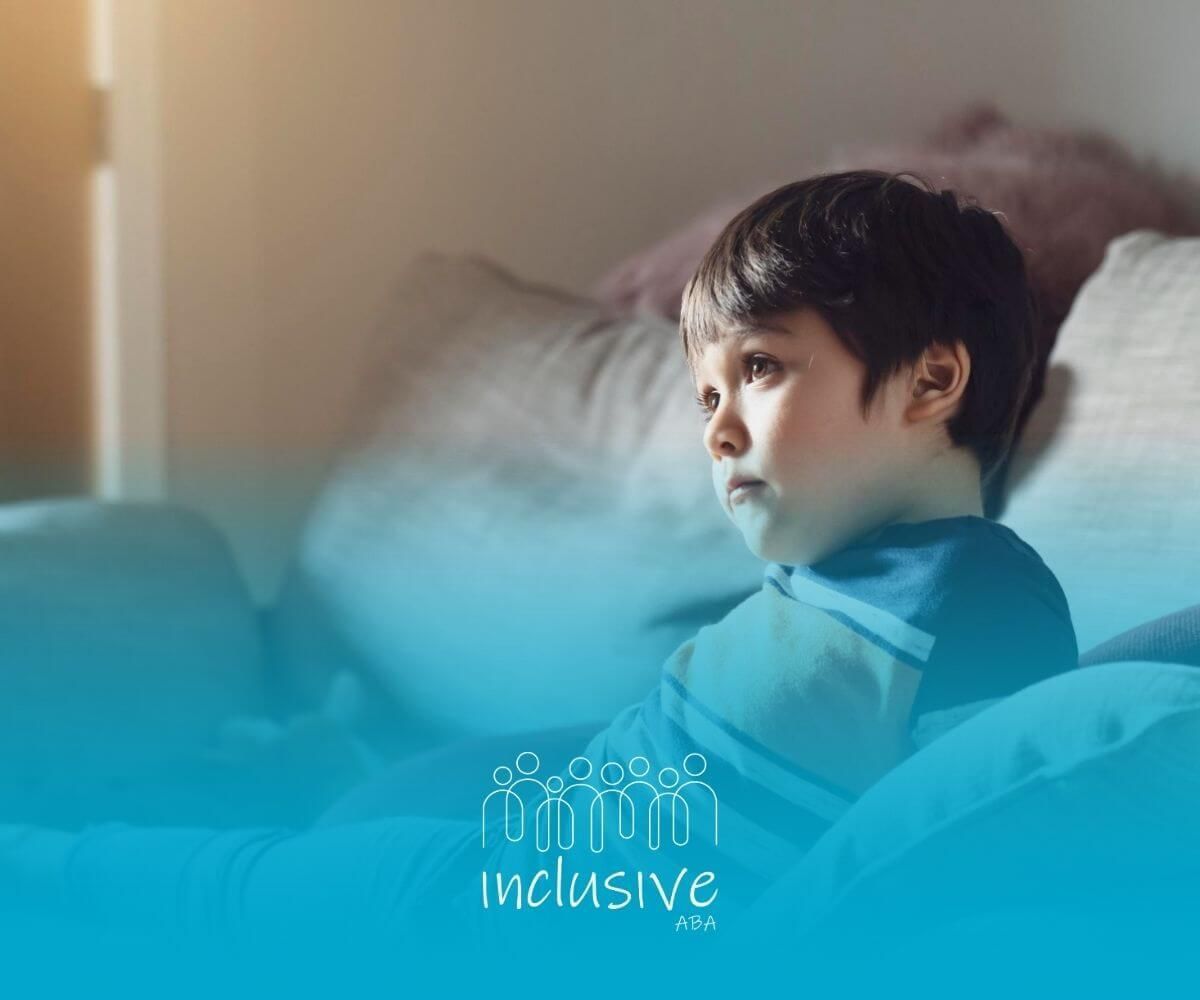Find Your Calm: ABA Therapy for Autism Related Stress
Living with autism spectrum disorder comes with special challenges. Many people feel extra stress from things like strong senses, communication struggles, and changing demands in life. Applied Behavior Analysis (ABA) therapy is an important support to help manage this stress. It uses organized techniques and personal plans for each person. With ABA therapy, autistic individuals can tackle their triggers, learn coping strategies, and improve their emotional health. This article looks at how autism and stress relate and shows how ABA therapy can help overcome these issues.
Understanding Autism-Related Stress
Autism-related stress comes from a mix of sensory sensitivities and challenges in social communication. Things like loud noises and bright lights can raise stress levels. Difficulty understanding social cues can make daily life harder. These issues often result in increased anxiety and affect an autistic person’s emotional regulation.
When routines change unexpectedly, stress responses can rise. This creates more problems in managing everyday life. It is important to understand what causes stress for autistic individuals. This knowledge can help in creating supportive interventions that improve their quality of life.
Definition and Symptoms of Autism-Related Stress
Autism-related stress happens because of higher levels of anxiety and discomfort linked to the unique brain differences in people on the autism spectrum. It often includes problems with processing sensory information, which can lead to sensory overload. A change in daily routines can also cause a strong reaction.
Stress can increase during social interactions. Many people with autism find it hard to understand facial expressions, body language, or tone of voice. This challenge can lead to feelings of isolation and social anxiety, making it harder to engage in the community.
The physical signs of autism-related stress can show up as repetitive actions, emotional outbursts, or withdrawal from others. Behavioral analysis shows that stress levels in these individuals can be very different from those of neurotypical individuals. This highlights the need for personalized stress management strategies, such as aba therapy.
Differences in Stress Responses Between Autistic and Non-Autistic Individuals
Stress responses are quite different for autistic and non-autistic people. This difference is mainly due to how they process sensory information and adapt to their environment. Autistic individuals often feel sensory sensitivities. This means loud sounds, bright lights, or too much touch can upset them and lead to strong emotions.
Basic stress management methods may not work well for autistic individuals facing sensory overload. Behavioral analysis in ABA therapy shows specific patterns that are unique to those on the autism spectrum. These patterns include withdrawal, avoiding situations, or feeling overstimulated.
In contrast to non-autistic individuals, people with autism depend a lot on routine and predictability to help manage stress. If they lose this structured environment, it can lead to significant anxiety symptoms. ABA therapy uses helpful strategies that are designed to support these differences effectively.
Role of ABA Therapy in Managing Autism-Related Stress
ABA therapy is very important for managing stress related to autism. It focuses on individual strategies that fit each person's unique triggers. Positive reinforcement is a key part of ABA. It helps people build coping skills to handle stress.
The therapy uses relaxation techniques and organized learning settings to tackle stress caused by sensory sensitivities and social difficulties. By lowering problem behaviors and improving emotional regulation, ABA therapy helps people deal with stressful situations better. This leads to an improved overall quality of life.
Core Principles of ABA Therapy for Stress Management
ABA therapy is a method that helps to reduce stress by using behavior analysis. A key part of this approach is positive reinforcement. This means giving rewards to motivate autistic individuals to do behaviors that help them feel less stressed. Rewards can include praise or letting them do activities they enjoy.
Coping skills, such as relaxation techniques, play an important role in ABA therapy. The sessions are organized to make tough skills easier to learn. For example, they teach deep breathing exercises and mindfulness practices to help calm the mind.
ABA therapy also focuses on being flexible. Treatment plans are made to fit each person’s unique stress triggers and reactions. This way, the therapy can target specific challenges effectively. By combining structure, rewards, and stress-relief techniques, ABA therapy supports better emotional regulation and improves the quality of life for autistic individuals.
Case Studies: Success Stories of ABA Therapy in Stress Reduction
Many success stories show how ABA therapy can greatly help reduce stress. In one case, a young autistic boy with sensory sensitivities used visual schedules and progressive muscle relaxation from his ABA sessions. These coping strategies helped him better prepare for daily routines and handle sensory overload, which made his life much better.
In another case, there was a non-verbal child who had trouble with anxiety. The child’s special treatment plan included relaxation techniques and worked on communication skills. Over time, these changes greatly reduced their meltdowns in stressful moments.
Families with autistic children often see good results too. Working with ABA therapists gives them knowledge about triggers and coping strategies. This teamwork helps create a more balanced emotional environment, easing stress for everyone in the family.
Techniques Used in ABA Therapy for Stress Reduction
ABA therapy uses various techniques designed for autistic individuals. One stress reduction method is deep breathing exercises. These can help with anxiety. Visual schedules are also used to create structure and routine.
Sensory tools like fidget toys and noise-canceling headphones help deal with sensory overload. ABA techniques also use adaptive behavior modules. These help manage triggers so that individuals can develop coping strategies. Together, these methods help create a supportive learning environment that promotes stress relief.
Identifying and Modifying Stress Triggers
ABA therapy understands that finding stress triggers is very important for good stress management. ABA therapists use Functional Behavior Assessments (FBAs) to find specific triggers. These can include loud noises or new places that make stress responses worse.
After identifying triggers, therapists create interventions that promote positive behaviors. For example, changing stressful situations by using calm settings or visual aids helps individuals handle changes better.
In therapy, methods like deep breathing exercises support individuals in managing their anxiety during tough times. Doing these exercises regularly builds strength and helps autistic individuals change how they react to usual stressors.
Teaching Coping Mechanisms Through Behavioral Interventions
ABA therapy focuses on teaching good coping skills that suit each person using different behavior strategies. Some of these strategies include relaxation techniques like deep breathing exercises and progressive muscle relaxation. These help people handle the signs of stress.
With ABA techniques, people learn to spot what causes their anxiety, whether it’s feelings or their surroundings. They then respond in a helpful way. This often includes practicing mindfulness practices in calm areas to grow emotional strength.
Therapists also use positive reinforcement to encourage people to use their coping skills. For example, they give rewards or praise when someone successfully uses relaxation techniques in stressful situations. This helps make these helpful behaviors regular habits over time.
Importance of Routine and Structure in Reducing Anxiety
Routine and structure are important for helping reduce anxiety in people with autism. Having predictable daily routines gives a sense of security. This helps lower the stress that comes from unexpected changes. ABA therapy supports autistic individuals in creating these structured environments with tools like calendars and task charts.
Having structured routines allows parents and caregivers to give strong support to their children. When there are clear expectations, children can stay focused and manage their emotions better. This reduces anxiety levels.
You can set up these structured environments at home and at school. Therapists help families develop consistent routines that fit the child's unique needs. This helps build strength against challenges. This structured way of doing things is key in ABA therapy for improving well-being.
The Impact of ABA Therapy on Family Dynamics
ABA therapy helps not only autistic individuals but also improves family life. Families learn how to manage stress and set up routines that benefit their child's emotions.
When families communicate openly and use helpful methods, parents and siblings feel less stress. ABA therapy encourages strong relationships in families. It helps build a place where understanding and teamwork thrive.
Educating Parents and Siblings on Support Techniques
ABA therapy focuses on helping families learn stress management techniques. These techniques are important for supporting autistic children. Therapists help parents and siblings to create a supportive environment that meets the sensory sensitivities and emotional needs of their children.
Workshops on open communication are organized to teach parents skills like active listening and spotting non-verbal signals from their child. This helps improve family understanding and harmony.
Siblings also learn how to encourage positive interactions and reduce conflicts. When families work together like this, it creates a nurturing atmosphere that helps lower stress.
Improving Family Communication and Understanding
Family communication is very important for the success of ABA therapy. With specific techniques, parents and siblings learn how to communicate better to help their autistic child. For instance, some methods focus on building social skills by teaching families to give clear prompts and encourage positive behaviors.
These improvements help family members understand each other better. This reduces miscommunication and conflicts that can happen because of autism-related stress. Parents feel more ready to deal with tough situations in daily life.
When open communication improves, families notice stronger emotional bonds and lower stress levels. ABA therapy helps create a solid foundation for lasting harmony in family relationships.
Balancing Family Involvement and Independence
ABA therapy strikes a good balance between helping families and encouraging independence in autistic children. Parents play a key role in reinforcing coping strategies that kids learn in therapy sessions. This helps keep things consistent in different places.
Therapists work on giving kids the freedom they need to face everyday challenges. This independence grows over time through well-structured ABA sessions. These sessions focus on developing new skills while also helping kids rely less on their parents.
Working together allows families to stay involved while children build the confidence to manage their own stress responses and behaviors in an effective way.
Implementing ABA Techniques in Different Environments
ABA therapy works well in different places, like schools and homes. It uses organized ABA strategies to create a steady learning space that meets the needs of autistic individuals and their stress triggers.
By working together, parents, teachers, and therapists help ABA therapy move easily between settings. This helps children apply their coping skills in different situations. This approach focuses on consistency and makes moving between places less stressful.
Adapting ABA Methods for School Settings
ABA strategies can be specially designed for schools to help autistic students get more involved in learning. Using techniques like visual schedules helps make routines clearer. This can lower stress when students need to switch classes.
When ABA therapists and teachers work together, it leads to successful results. Therapists share valuable tips on adaptive behavior to handle common stress points. Meanwhile, teachers make sure the strategies are used all the time.
Creating structured and caring places for learning helps children face challenges. ABA therapy allows them to succeed in school.
Tips for Home-Based ABA Practices
Home-based ABA practices are important for supporting stress management. Parents can use tools like visual schedules and sensory items to build routines that lower anxiety.
Including ABA therapy methods in daily activities, like using rewards for finishing tasks, helps strengthen coping skills. Also, sensory-friendly areas, such as "quiet spaces," aid children in managing their emotions well. Working together with ABA therapists lets families improve and adjust techniques to fit their home needs. These practices lead to positive outcomes for both the child and the family.
When managing autism-related stress, in-home ABA therapy services can offer a personalized approach that makes all the difference. By creating a calm and familiar environment, these services allow children with autism to engage in therapeutic techniques tailored to their specific needs. The ability to receive therapy at home promotes a sense of comfort and consistency, making it easier for individuals to learn how to manage stress effectively. If you're looking for support that can be delivered in the comfort of your own space, in-home ABA therapy services may be the perfect fit for your family.
Collaboration Between Therapists, Teachers, and Parents
Collaboration among ABA therapists, teachers, and parents is key for making stress management techniques work better. Regular communication helps to keep therapy goals the same at home and school.
Teachers use methods like positive reinforcement and daily visual aids that therapists share. This helps to create a smooth learning experience. At the same time, parents give feedback about challenges at home. This feedback allows changes to the interventions as needed. This teamwork creates a flexible plan that helps children make steady progress. It also improves stress reduction methods in different settings.
Conclusion
In conclusion, managing stress related to autism with ABA therapy is a caring and organized way that fits the needs of autistic individuals. Understanding how people respond to stress differently and using basic ABA principles can help families create good strategies. These strategies can reduce stress triggers, teach important coping skills, and build a supportive environment. The benefits of ABA therapy go beyond just the person involved. They can improve family connections and help everyone communicate better. As you start this journey, remember that being consistent, working together, and learning are important. If you want more personal help, think about contacting experts in ABA therapy to get the best results for your loved ones. Together, we can create a caring space where everyone can thrive.
At Inclusive ABA, we understand that autism-related stress can be overwhelming for both children and parents. Our specialized ABA therapy services are designed to address stress management through personalized strategies, helping individuals with autism find their calm. With our compassionate approach, we empower families to navigate challenges and create lasting positive change. If you're seeking effective support, reach out to us today and discover how our ABA services near you can make a difference.
Frequently Asked Questions
What age should ABA therapy begin for managing stress in autistic children?
ABA therapy can begin when a child is 18 months old as part of pediatric ABA therapy programs. Starting early with tailored therapy sessions can help kids on the autism spectrum. This early intervention improves stress management and boosts development. It helps teach coping strategies during important growth periods.
How long does it typically take to observe improvements in stress management?
Improvements in stress management with ABA therapy can be different for each person. Many people notice positive changes in just a few months. This varies based on how long they are in therapy, how consistently the therapy is used, and how well positive reinforcement is matched to the child's specific needs.
Can ABA therapy be personalized for each child's specific stressors?
ABA therapy focuses on creating a treatment plan just for each child. The therapists look for what causes stress and use strategies that fit the child’s unique challenges. This way, they help create effective coping mechanisms that can really work for them.
What measures are used to evaluate the effectiveness of ABA in reducing stress?
ABA therapy uses behavior checks and tracking results to see how well it works. It continuously looks at ways to lower stress, improve coping skills, and achieve therapy goals. This ongoing review helps adapt the therapy to fit each person’s needs over time.
Looking for Expert Help? We're Here for You!
Our compassionate and skilled team is devoted to enhancing your child's development through customized ABA therapy. Let us partner with you to create a supportive environment for your child's success.
Discover how we can help your family thrive with expert ABA therapy.
Related Posts







